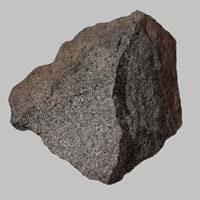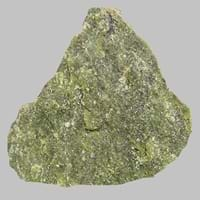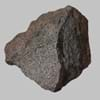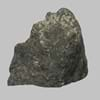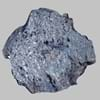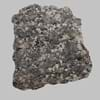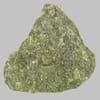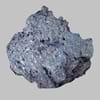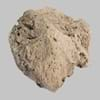Pantellerite and Rhyodacite
Definition
Definition
Pantellerite is a peralkaline rhyolite. It has a higher iron and lower aluminium composition than comendite
Rhyodacite is an extrusive volcanic rock intermediate in composition between dacite and rhyolite
History
Origin
Strait of sicily
USA
Discoverer
Unknown
Unknown
Etymology
From Pantelleria, a volcanic island in the Strait of Sicily
Rhyo lite + dacite : a rock intermediate between rhyolite and dacite that is the extrusive equivalent of granodiorite
Class
Igneous Rocks
Igneous Rocks
Sub-Class
Durable Rock, Hard Rock
Durable Rock, Medium Hardness Rock
Family
Group
Volcanic
Volcanic
Other Categories
Fine Grained Rock, Opaque Rock
Fine Grained Rock, Opaque Rock
Texture
Texture
Eutaxitic
Earthy
Color
Dark Greenish - Grey
Black to Grey, Dark Greenish - Grey
Maintenance
Less
More
Durability
Durable
Durable
Water Resistant
Yes
Yes
Scratch Resistant
Yes
Yes
Stain Resistant
Yes
No
Wind Resistant
Yes
No
Acid Resistant
Yes
No
Appearance
Layered and Foliated
Skeletal
Uses
Architecture
Interior Uses
Not Yet Used
Decorative Aggregates, Interior Decoration
Exterior Uses
Not Yet Used
As Building Stone, Garden Decoration
Other Architectural Uses
Not Yet Used
Curbing
Industry
Construction Industry
NA
As Dimension Stone, Construction Aggregate, for Road Aggregate, Landscaping
Medical Industry
Not Yet Used
Not Yet Used
Antiquity Uses
Artifacts, Sculpture
Artifacts
Other Uses
Commercial Uses
Creating Artwork
Cemetery Markers, Creating Artwork
Types
Types
Pantelleritic Ignimbrite
Not Available
Features
High Fe content
Available in Lots of Colors and Patterns
Archaeological Significance
Monuments
Not Yet Used
Not Yet Used
Famous Monuments
Not Applicable
Not Applicable
Sculpture
Not Yet Used
Not Yet Used
Famous Sculptures
Not Applicable
Not Applicable
Pictographs
Not Used
Used
Petroglyphs
Not Used
Used
Figurines
Not Yet Used
Not Yet Used
Fossils
Absent
Absent
Formation
Formation
Pantellerite is a fine-grained, hard rock which is a type of metasomatite, essentially altered basalt. It forms with or without crystallization, either below the surface as intrusive rocks or on the surface as extrusive rocks.
Rhyodacite is a fine-grained, hard rock which is a type of metasomatite, essentially altered basalt. It forms with or without crystallization, either below the surface as intrusive rocks or on the surface as extrusive rocks.
Composition
Mineral Content
Amphibole, Feldspar, Ilmenite
Amphibole, Apatite, Biotite, Feldspar, Garnet, Hornblade, Magnetite, Plagioclase, Pyroxene, Quartz, Zircon
Compound Content
Al, Fe
Ca, Fe, Potassium Oxide, NA, Potassium, Silicon Dioxide
Transformation
Metamorphism
Yes
Yes
Types of Metamorphism
Burial Metamorphism, Cataclastic Metamorphism
Burial Metamorphism, Cataclastic Metamorphism, Contact Metamorphism, Hydrothermal Metamorphism, Impact Metamorphism, Regional Metamorphism
Weathering
Yes
Yes
Types of Weathering
Biological Weathering, Chemical Weathering
Biological Weathering, Chemical Weathering, Mechanical Weathering
Erosion
Yes
Yes
Types of Erosion
Chemical Erosion, Coastal Erosion, Glacier Erosion, Sea Erosion, Water Erosion, Wind Erosion
Chemical Erosion, Coastal Erosion, Glacier Erosion
Properties
Physical Properties
Hardness
6-7
5.5-6
Grain Size
Fine Grained
Fine Grained
Fracture
Sub-conchoidal
Conchoidal
Streak
Unknown
Black
Porosity
Less Porous
Less Porous
Luster
Earthy
Greasy to Dull
Compressive Strength
Not Available
200.50 N/mm2
9
Cleavage
Conchoidal
Not Available
Toughness
2
2.1
Specific Gravity
Not Available
2.34-2.40
Transparency
Translucent to Opaque
Opaque
Density
Not Available
Not Available
Thermal Properties
Specific Heat Capacity
Not Available
1.12 kJ/Kg K
7
Resistance
Heat Resistant
Heat Resistant
Reserves
Deposits in Eastern Continents
Asia
China, India
China, India, Iran, Saudi Arabia, Sri Lanka, Taiwan, Thailand, Turkey, Vietnam
Africa
Angola, Egypt, Madagascar, Namibia, Nigeria
Angola, Egypt, Madagascar, Namibia, Nigeria, South Africa
Europe
Germany, Iceland, Ireland, Italy, Spain, United Kingdom
Austria, Belgium, Finland, France, Germany, Italy, Norway, Sardinia, Spain, Switzerland
Others
Not Yet Found
Not Yet Found
Deposits in Western Continents
North America
Canada, USA
Canada, USA
South America
Argentina, Bolivia, Brazil, Colombia, Ecuador
Not Yet Found
Deposits in Oceania Continent
Australia
Central Australia, Queensland, Western Australia
Not Yet Found
All about Pantellerite and Rhyodacite Properties
Know all about Pantellerite and Rhyodacite properties here. All properties of rocks are important as they define the type of rock and its application. Pantellerite and Rhyodacite belong to Igneous Rocks.Texture of Pantellerite is Eutaxitic whereas that of Rhyodacite is Earthy. Pantellerite appears Layered and Foliated and Rhyodacite appears Skeletal. The luster of Pantellerite is earthy while that of Rhyodacite is greasy to dull. Pantellerite is available in dark greenish - grey colors whereas Rhyodacite is available in black to grey, dark greenish - grey colors. The commercial uses of Pantellerite are creating artwork and that of Rhyodacite are cemetery markers, creating artwork.
|
||
|
||
|
